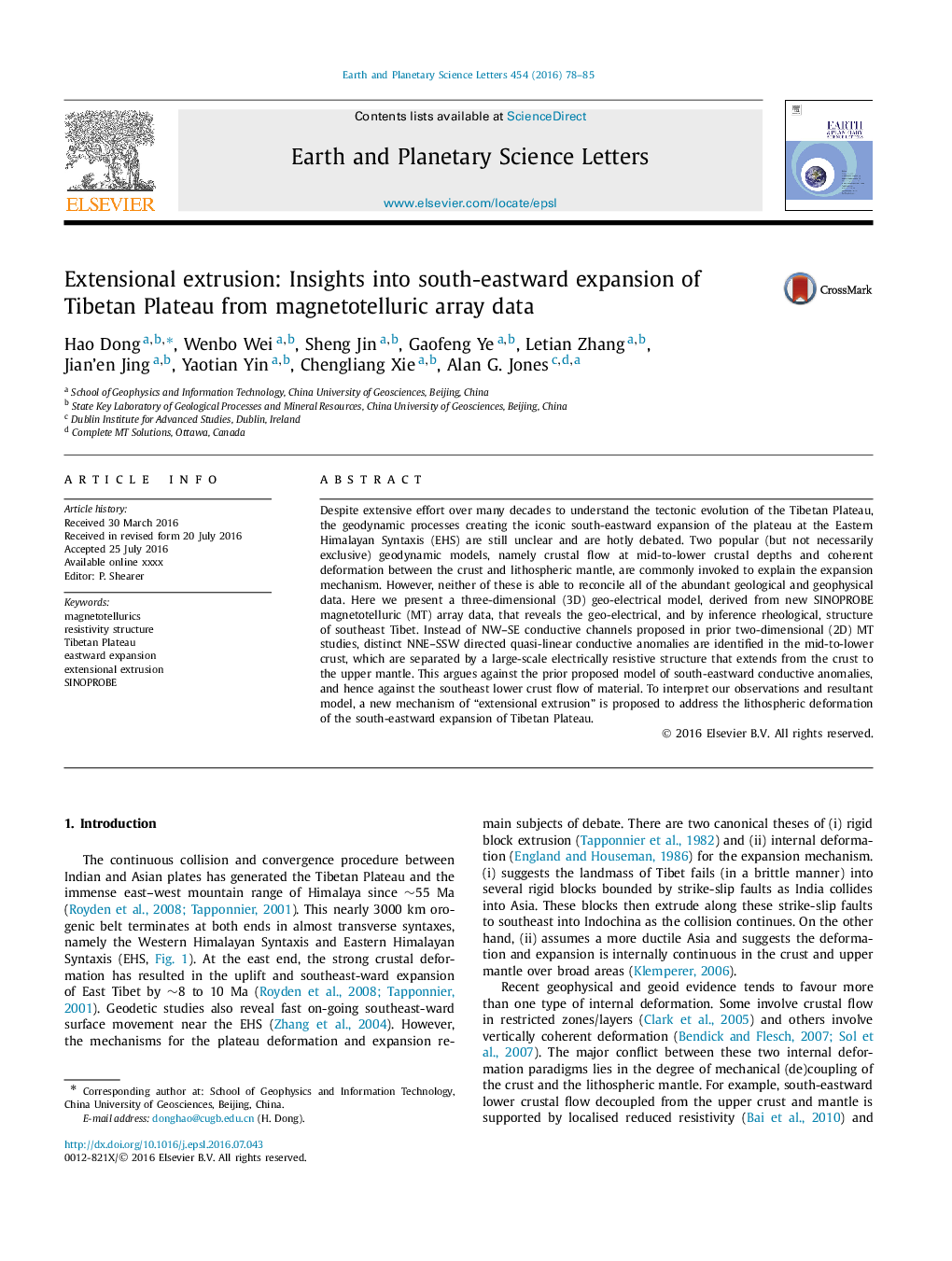| Article ID | Journal | Published Year | Pages | File Type |
|---|---|---|---|---|
| 6427184 | Earth and Planetary Science Letters | 2016 | 8 Pages |
Abstract
Despite extensive effort over many decades to understand the tectonic evolution of the Tibetan Plateau, the geodynamic processes creating the iconic south-eastward expansion of the plateau at the Eastern Himalayan Syntaxis (EHS) are still unclear and are hotly debated. Two popular (but not necessarily exclusive) geodynamic models, namely crustal flow at mid-to-lower crustal depths and coherent deformation between the crust and lithospheric mantle, are commonly invoked to explain the expansion mechanism. However, neither of these is able to reconcile all of the abundant geological and geophysical data. Here we present a three-dimensional (3D) geo-electrical model, derived from new SINOPROBE magnetotelluric (MT) array data, that reveals the geo-electrical, and by inference rheological, structure of southeast Tibet. Instead of NW-SE conductive channels proposed in prior two-dimensional (2D) MT studies, distinct NNE-SSW directed quasi-linear conductive anomalies are identified in the mid-to-lower crust, which are separated by a large-scale electrically resistive structure that extends from the crust to the upper mantle. This argues against the prior proposed model of south-eastward conductive anomalies, and hence against the southeast lower crust flow of material. To interpret our observations and resultant model, a new mechanism of “extensional extrusion” is proposed to address the lithospheric deformation of the south-eastward expansion of Tibetan Plateau.
Related Topics
Physical Sciences and Engineering
Earth and Planetary Sciences
Earth and Planetary Sciences (General)
Authors
Hao Dong, Wenbo Wei, Sheng Jin, Gaofeng Ye, Letian Zhang, Jian'en Jing, Yaotian Yin, Chengliang Xie, Alan G. Jones,
